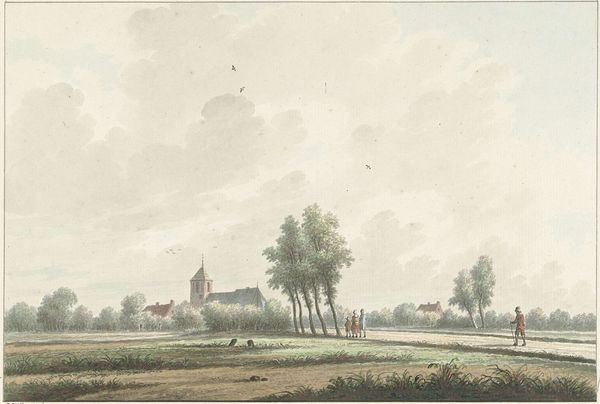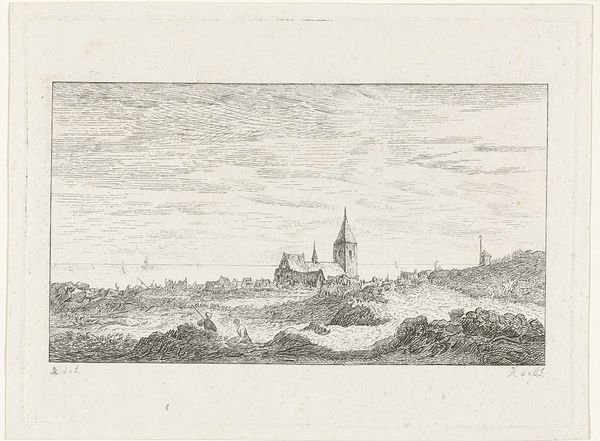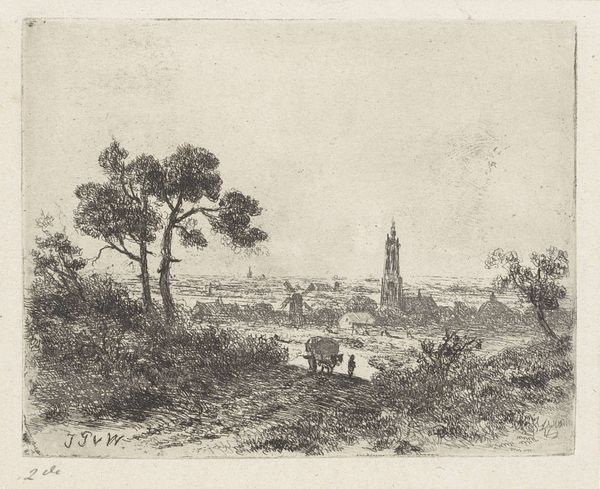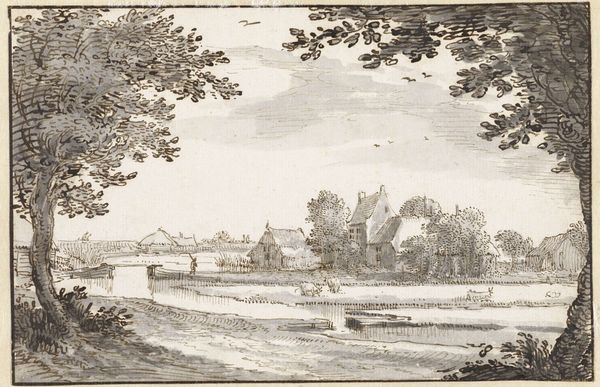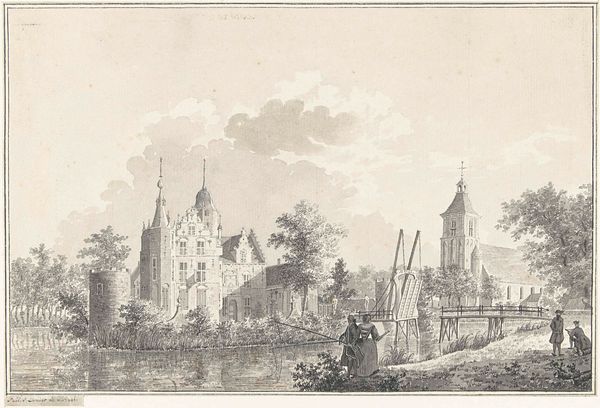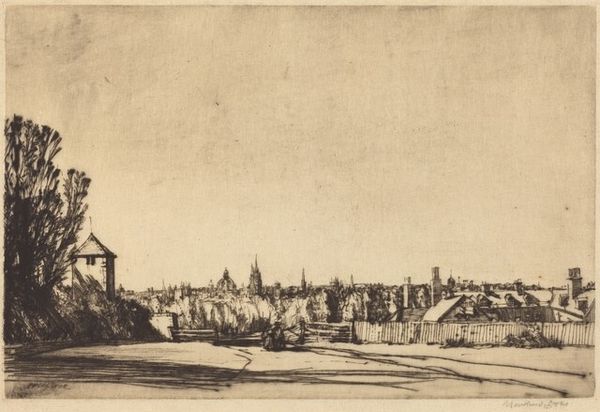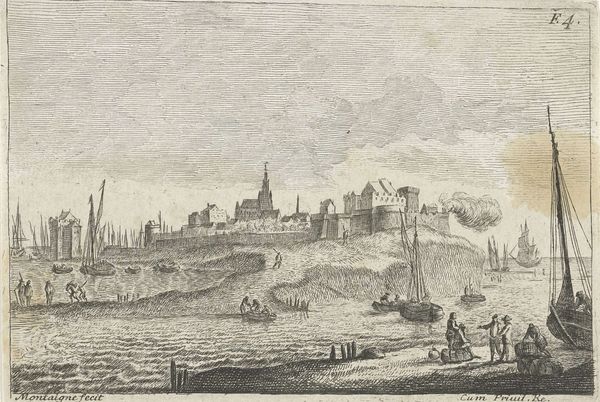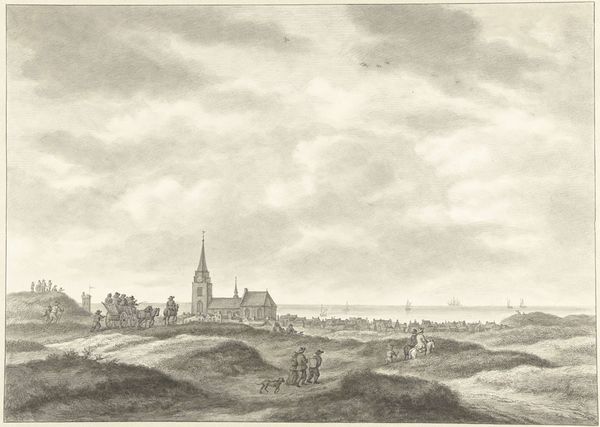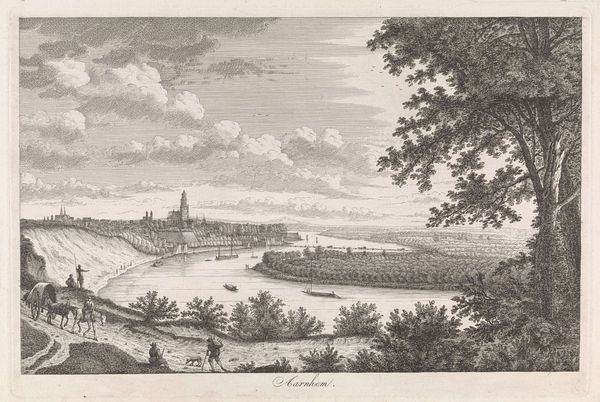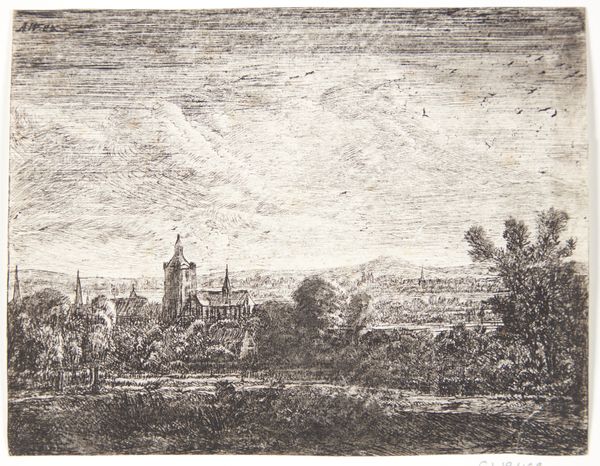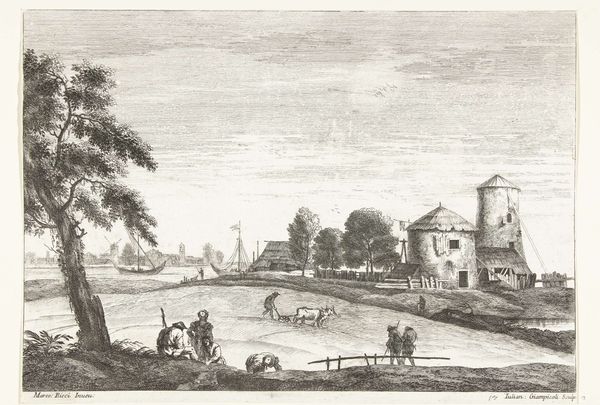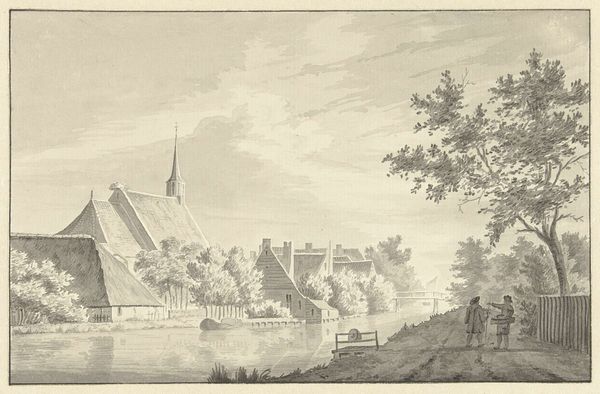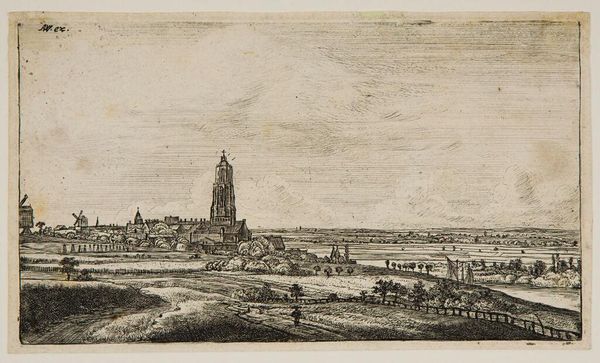
drawing, tempera, paper, pencil, woodcut
#
tree
#
drawing
#
tempera
#
landscape
#
house
#
charcoal drawing
#
paper
#
oil painting
#
forest
#
pencil
#
woodcut
#
cityscape
#
northern-renaissance
#
watercolor
#
building
Copyright: Public domain
Curator: Albrecht Dürer’s “View of Nuremberg,” made around 1497, invites us to observe a moment frozen in time. Editor: It's funny, isn’t it? How watercolor manages to look both delicate and somehow… earthy. All those soft hues and precise renderings—the roofs practically glow, while the foreground feels like raw soil. Curator: Yes, I think there’s a powerful contrast in how Dürer renders space. Notice the very specific structures, that fortified wall cutting diagonally across our vision, but then dissolving into this hazy, almost dreamlike vision of Nuremberg beyond. It speaks to this idea of distance and longing, doesn't it? Like memory. Editor: And yet it's a remarkably practical depiction, too. This would’ve been preparatory work. Color-coded notations might be visible in places—this was about recording reality for later adaptation into woodcuts or even larger paintings, right? It showcases how material constraints – like paper size and pigment availability -shaped his artistic choices. Curator: Precisely. I see the piece as straddling a transition point—still rooted in medieval techniques while gazing toward the Renaissance desire to capture perspective and space. Do you think he romanticized it? Editor: Hard to say without knowing how many workshops and laborers were employed to erect the structures he portrays! Art exists in economy. Still, its capacity for transforming the ordinary, such as brick or soil, into something extraordinary isn’t lost on me. Curator: Well said! I’m left with this sense of seeing the world through Dürer’s curious and intensely observant eyes—trying to understand the balance between what we build and what simply…is. Editor: For me, the artwork encourages seeing connections between place and the work embedded in building it, both physically with brick and aesthetically with layers of translucent wash on paper. It serves as a poignant marker of human ingenuity intersecting with the quiet tenacity of earth itself.
Comments
No comments
Be the first to comment and join the conversation on the ultimate creative platform.
